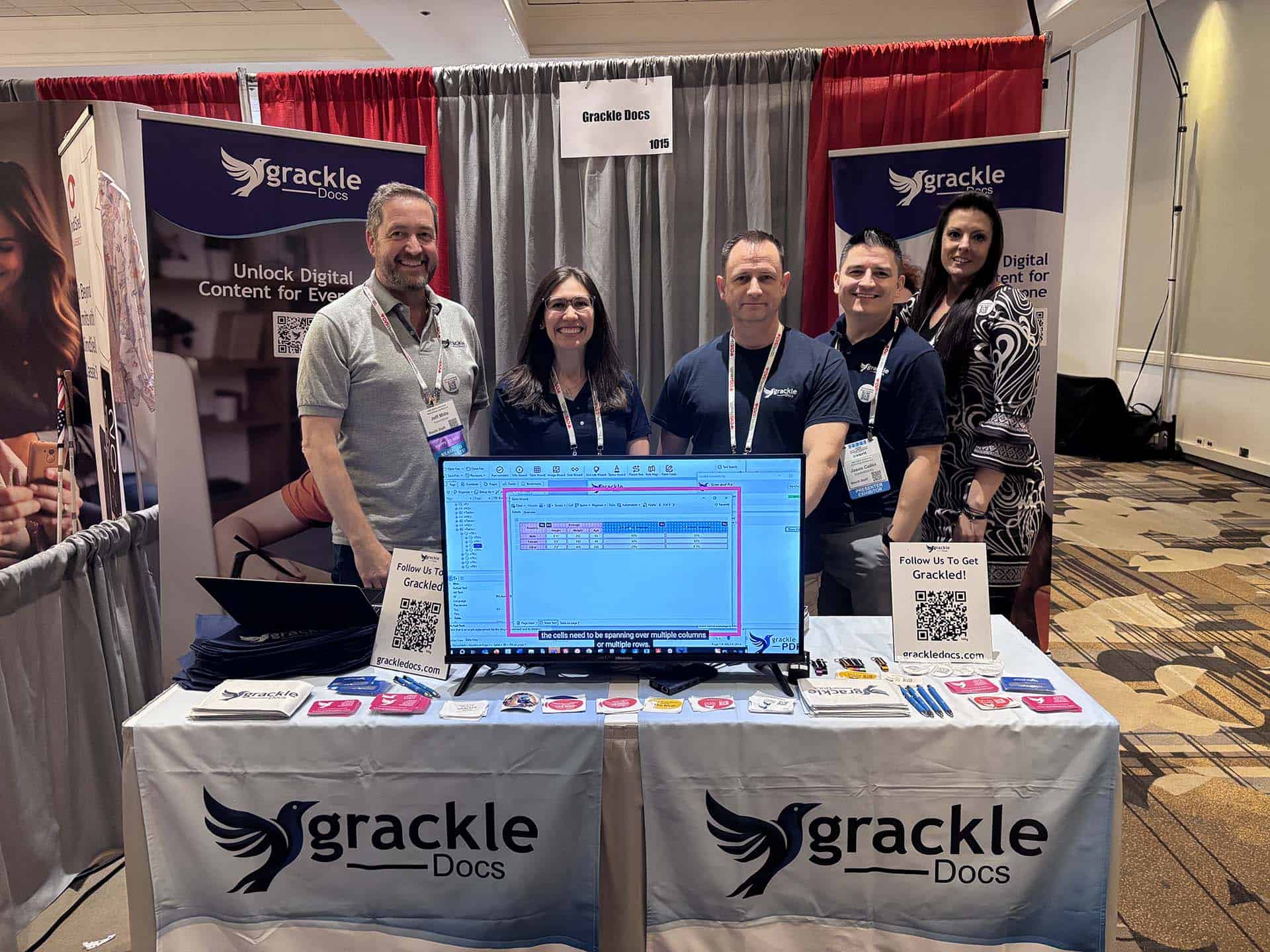At skabe tilgængeligt indhold er ikke længere bare en best practice; det er en nødvendighed. Ved at sikre, at indholdet er inkluderende og let at forstå for alle læsere, også handicappede, kan du udvide din målgruppe, forbedre brugeroplevelsen og øge engagementet. Uanset om du skriver til en blog, et website eller sociale medier, spiller tilgængelighed en afgørende rolle for at sikre, at alle kan bruge og interagere med dit indhold.
Fordelene ved tilgængeligt indhold er mange, herunder overholdelse af juridiske standarder, bedre søgemaskineoptimering (SEO) og skabelse af et mere indbydende miljø for mennesker med forskellige evner. Målet med denne artikel er at give dig de bedste metoder til at skrive tilgængeligt indhold, så du sikrer, at dine tekster når ud til så mange mennesker som muligt, herunder personer med visuelle, auditive, kognitive og motoriske handicap.
Forståelse af tilgængeligt indhold
Tilgængeligt indhold henviser til information, der er designet til at kunne bruges af så mange mennesker som muligt, uanset deres handicap eller begrænsninger. Tilgængelighed er især vigtig for personer med handicap som f.eks. synshandicap, høretab, kognitive vanskeligheder eller motoriske udfordringer. Utilgængeligt indhold kan føre til forvirring, frustration og udelukkelse for disse personer, hvilket begrænser deres mulighed for at engagere sig i dit website eller dine oplysninger.
Der er etablerede standarder, som f.eks. Retningslinjer for tilgængelighed af webindhold (WCAG) og den Lov om handicappede amerikanere (ADA), der giver klare retningslinjer for at sikre, at indholdet er tilgængeligt. WCAG beskriver f.eks. specifikke foranstaltninger til at gøre webindhold mere brugbart, som f.eks. at sikre, at tekst kan ændres i størrelse, give alternativ tekst til billeder og tilbyde udskrifter til multimedieindhold. ADA-overholdelse sikrer også, at mennesker med handicap har lige adgang til digitalt indhold. Hvis du ikke overholder disse standarder, kan du ikke kun isolere en del af din målgruppe, men det kan også få juridiske konsekvenser.
Bedste praksis for at skrive tilgængeligt indhold
Klart og enkelt sprog
Et af de vigtigste aspekter af tilgængeligt indhold er brugen af et klart og enkelt sprog. Skrivning, der er alt for kompleks eller fyldt med jargon, kan være svær at forstå for mange læsere, især dem med kognitive handicap eller personer, der taler engelsk som andetsprog.
- Brug almindeligt sprog: Klart sprog forbedrer forståelsen. Ved at nedbryde komplekse ideer til enklere termer gør du dit indhold mere fordøjeligt for alle læsere. Det betyder ikke, at du skal nedtone dit indhold, men at du skal gøre det så ligetil som muligt.
- Undgå jargon og idiomer: Branchespecifik terminologi og talemåder kan skabe forvirring, især for personer med et andet modersmål eller læsere med kognitive handicap. I stedet for at sige “ramte hovedet på sømmet”, skal du bare sige “fik det helt rigtigt”.”
- Korte sætninger og afsnit: Lange sætninger og afsnit kan overvælde læserne. Hold dig til korte, præcise sætninger, og hold afsnittene fokuseret på én idé ad gangen. Det gør indholdet lettere at scanne og forstå.
Overskrifter og struktur
Velorganiseret indhold hjælper alle brugere med at navigere lettere i informationen. Det gælder især for brugere, der er afhængige af skærmlæsere, som bruger overskrifter til at fortolke og navigere på en side.
- Brug beskrivende overskrifter: Overskrifter skal ikke bare være til stede, men være beskrivende for det indhold, der følger. I stedet for at bruge vage overskrifter som “Introduktion” skal du bruge noget mere specifikt som “Hvorfor tilgængeligt indhold er vigtigt”. Strukturering af dit indhold med overskrifter som H1, H2 og H3 sikrer klarhed og organisering for både visuelle læsere og dem, der bruger hjælpemidler.
- Bryd op-indhold: I stedet for lange, uafbrudte tekstblokke skal du dele dit indhold op i mindre afsnit. Det forbedrer læsbarheden og hjælper brugerne med at navigere til de afsnit, der betyder mest for dem.
Lister og punktopstillinger
Lister og punktopstillinger øger læsbarheden og kan fungere som nyttige navigationsværktøjer for læsere, der bruger skærmlæsere. De skal dog formateres korrekt for at sikre tilgængelighed.
- Brug korrekt formaterede lister: Skærmlæsere fortolker velformaterede lister effektivt og meddeler, hvor mange elementer der er på listen, og hvordan de er opbygget. Undgå f.eks. at bruge en stjerne (*) eller en bindestreg (-) til at lave provisoriske lister, da de måske ikke kan genkendes af hjælpemidler.
- Nummererede lister til rækkefølge: Hvis rækkefølgen af elementer er vigtig, så brug en nummereret liste til at guide læseren gennem rækkefølgen. Brug punktopstillinger til ikke-sekventiel information.
Alt-tekst til billeder
Alternativ tekst (alt-tekst) er afgørende for at sikre, at personer, der bruger skærmlæsere, kan forstå visuelle elementer i dit indhold. Alt-tekst beskriver et billedes indhold og funktion og gør det tilgængeligt for personer med synshandicap.
- Skriv en beskrivende alt-tekst: Effektiv alt-tekst skal beskrive, hvad der er på billedet, og, hvis det er relevant, formidle dets formål. Hvis du f.eks. bruger et billede af en graf, skal du beskrive, hvad grafen illustrerer, ikke bare at det er en graf. Et godt eksempel kunne være: “Søjlediagram, der viser en stigning i salget på 30% fra 2. til 3. kvartal.”
- Hold det kort, men specifikt: Selv om det er vigtigt at være beskrivende, skal alt-teksten også være kortfattet. Sigt efter en eller to sætninger, der opsummerer billedet uden at overvælde brugeren.
Hyperlinks
Links skal være beskrivende for at give mening for både visuelle læsere og dem, der bruger hjælpemidler. Tvetydige sætninger som “klik her” er ikke nyttige, fordi de ikke giver nogen kontekst.
- Brug beskrivende link-tekst: I stedet for at bruge “klik her” skal du beskrive linkets destination. For eksempel: “Læs vores guide til forbedring af indholdets tilgængelighed” fortæller læseren præcis, hvor linket fører hen.
- Undgå lange URL'er i tekst: Når du skriver om tilgængelighed, skal du undgå at vise rå URL'er i indholdet. Lav i stedet hyperlinks til beskrivende sætninger for at skabe klarhed og forbedre læseflowet.
Multimedieindhold
Multimedieindhold som videoer og lydfiler skal også være tilgængeligt for alle brugere. Det kan gøres ved at levere udskrifter, billedtekster og sikre, at multimedieafspilleren er tilgængelig.
- Leverer udskrifter til lyd: Sørg for, at alle lydfiler leveres med en udskrift, som brugerne kan læse. Det hjælper dem, der er døve eller hørehæmmede, og det forbedrer også SEO.
- Brug billedtekster til videoer: Der skal være undertekster til alt videoindhold for at sikre, at personer med hørenedsættelse stadig kan bruge informationen. Disse undertekster skal synkroniseres med lyden for at formidle det talte indhold præcist.
- Sørg for tilgængelige medieafspillere: Video- eller lydafspilleren på dit websted skal også være tilgængelig, hvilket betyder, at brugerne kan interagere med den ved hjælp af deres tastatur og skærmlæsere.

Sikring af korrekt farvekontrast
Kontrastforhold
Farvekontrast er et vigtigt aspekt af tilgængelighed, der sikrer, at teksten på dit websted er læsbar i forhold til baggrunden. Ifølge WCAG-retningslinjer, Kontrastforholdet mellem tekst og baggrund bør være mindst 4,5:1 for normal tekst og 3:1 for stor tekst. Det sikrer, at personer med synshandicap, som f.eks. farveblindhed eller nedsat syn, nemt kan læse indholdet.
Valg af farver
Undgå at bruge farve alene til at formidle betydning. Hvis en besked f.eks. kun bruger farve til at angive vigtighed (f.eks. rød for “haster”), kan personer med farveblindhed gå glip af denne betydning. Brug i stedet andre visuelle signaler som fed tekst eller ikoner, eller inkluder tekstetiketter for at skabe klarhed. Hvis man desuden vælger mørk tekst på en lys baggrund (eller omvendt), forbedres læsbarheden for alle brugere.
Værktøjer og ressourcer til at tjekke tilgængelighed
Der findes flere værktøjer, som kan hjælpe dig med at vurdere og forbedre tilgængeligheden af dit indhold:
- Indbyggede brikker: Mange indholdsstyringssystemer (CMS) som WordPress og platforme som Microsoft Office kommer med indbyggede tilgængelighedskontroller. Disse værktøjer scanner dit indhold for almindelige tilgængelighedsproblemer, som f.eks. manglende alt-tekst eller forkert farvekontrast.
- Tredjepartsværktøjer: Plugins som WAVE og Grackle Scan er nyttige til at evaluere tilgængeligheden af webindhold. Grackle Workspace arbejder på at skabe tilgængeligt output fra Google Docs, Sheets og Slides. Disse værktøjer fremhæver problemer og giver anbefalinger til forbedring af indholdets tilgængelighed.
- Sådan bruger du disse værktøjer: De fleste af disse værktøjer er brugervenlige. For eksempel fungerer WAVE ved at indtaste din URL og scanne webstedet for problemer og give dig en visuel rapport om, hvad der skal rettes.
Eksempler fra det virkelige liv og casestudier
Flere organisationer har taget tilgængelighed til sig i skabelsen af indhold og oplevet positive resultater. For eksempel har BBC gjort sin hjemmeside meget tilgængelig ved at følge WCAG-retningslinjerne. Deres brug af beskrivende alt-tekst, korrekt farvekontrast og tydelig navigation har forbedret brugertilfredsheden, især blandt personer med handicap.
Et casestudie fra Shopify viser, hvordan tilgængeligt indhold påvirker brugernes engagement. Efter at have gjort deres produktsider mere tilgængelige ved hjælp af korrekte overskrifter, alt-tekst og forenklet sprog oplevede de en betydelig stigning i den tid, der blev brugt på deres sider, og et fald i afvisningsprocenten. Denne case viser, at tilgængeligt indhold ikke kun gavner brugerne, men også forbedrer hjemmesidens samlede performance.
Konklusion
Kort sagt handler det om at skrive tilgængeligt indhold ved at bruge et klart sprog, organisere information med overskrifter, give beskrivende alt-tekst og sikre korrekt kontrast og multimedietilgængelighed. Disse best practices hjælper med at gøre dit indhold brugbart for alle, uanset deres evner.
Begynd at implementere disse strategier for tilgængeligt indhold i dag for at sikre, at dit indhold når ud til alle målgrupper. Hvis du vil lære mere, kan du udforske yderligere ressourcer om WCAG-overholdelse og globale tilgængelighedsstandarder og kontakt os i dag.



